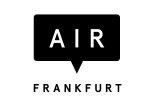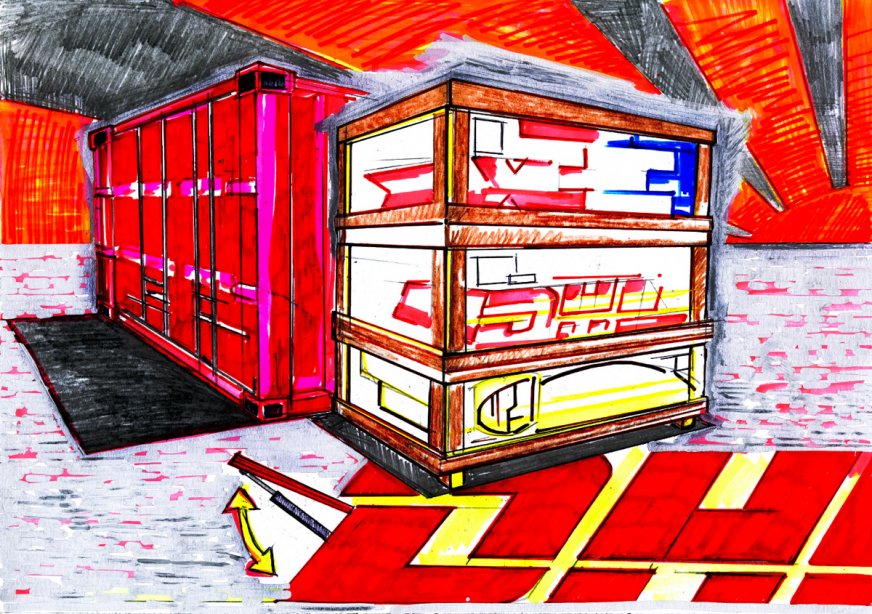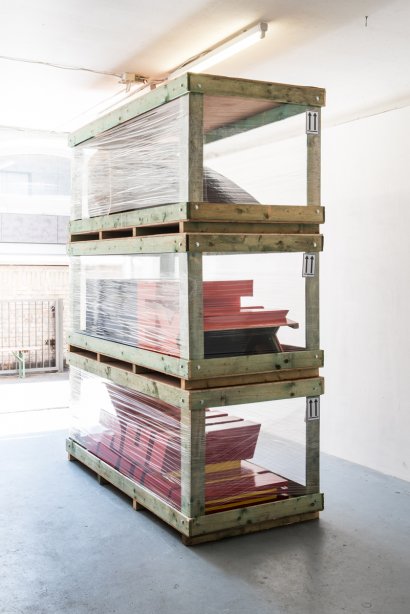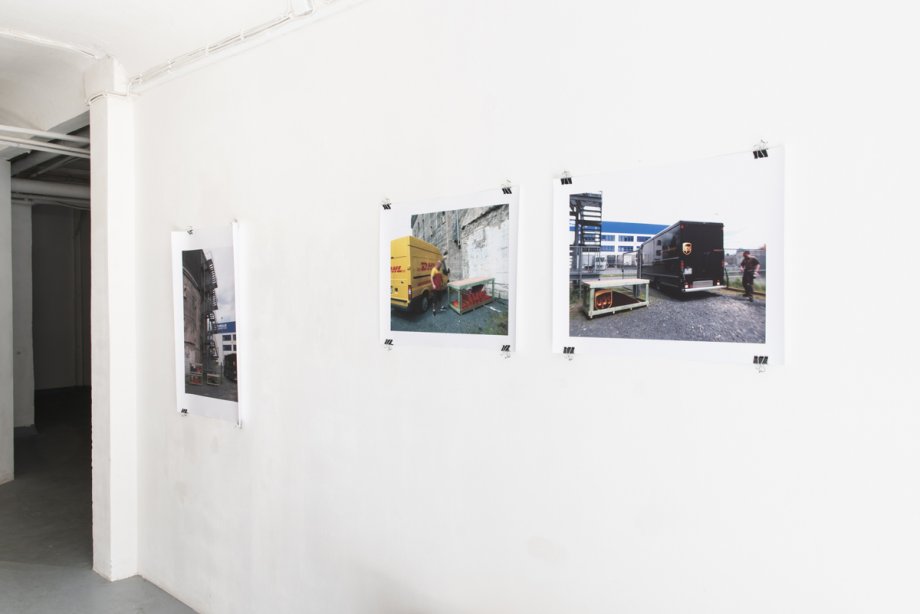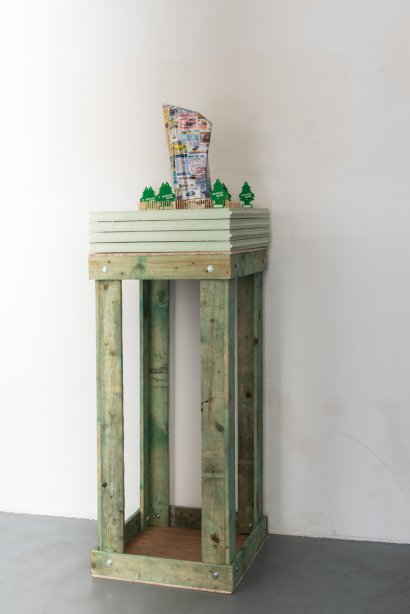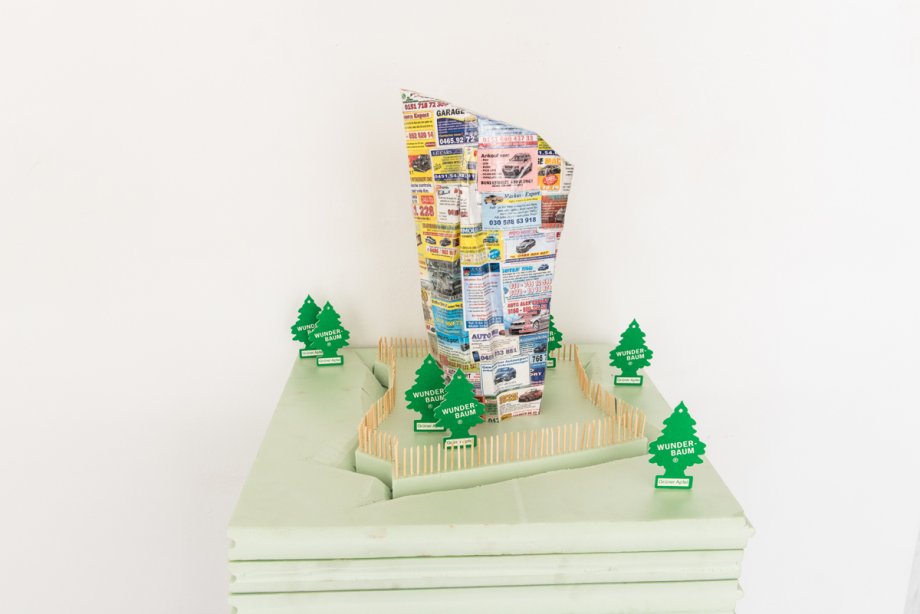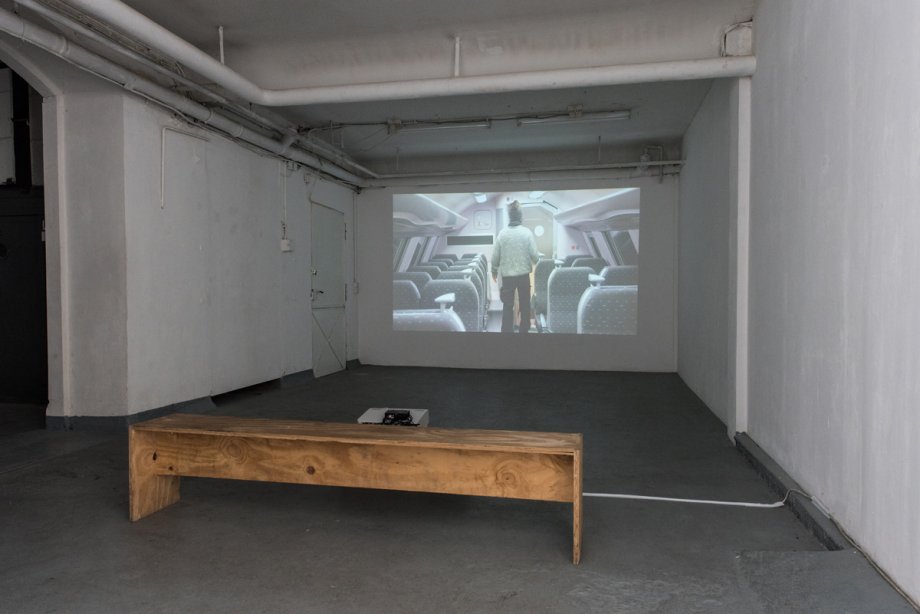Sie sind hier
Ort
basis e.V. Gutleutstraße 8-12 60329 Frankfurt am Main
Karl Philips - ETA (Estimated Time of Arrival)
Eröffnung: 23.06.16, 19 Uhr
Öffnungszeiten: Freitag 24. Juni, 12 bis 16 Uhr
Projektraum basis
Elbestraße 10, 60329 Frankfurt am Main
Wir laden Sie herzlich zur Eröffnung der Ausstellung “ETA (Estimated Time of Arrival)” von Karl Philips im basis-Projektraum am 23. Juni um 19 Uhr ein.
Die Ausstellung findet im Rahmen seiner AIR_Frankfurt-Residency und des damit verbundenen Projektes “State of the City” statt. “State of the City” widmet sich der komplexen Beziehung zwischen wirtschaftlichem Handel und sozio-kulturellen Zusammenhängen in den Städten Antwerpen, Rotterdam und Frankfurt am Main. Insgesamt erhalten sechs bildende KünstlerInnen Stipendien, um als Gastkünstler ortsspezifische Arbeiten in einer der drei Städte zu erarbeiten. Karl Philips wird neben den anderen KünstlerInnen des Projektes in einer abschließenden Gruppenausstellung im Oktober (13.10.-18.12.2016) parallel zur Frankfurter Buchmesse bei basis vertreten sein.
Die Ausstellung beschließt Karl Philips’ Residency mit AIR_Frankfurt als Teil des Projektes ‘State of the City’, eine Kollaboration zwischen Air Antwerpen, AIR_Frankfurt, Foundation Charlois aan het Water, Rotterdam und basis. Die Residency wurde unterstützt durch AIR_Frankfurt, City of Antwerp und der Flemish Community.
***************
Hall We see three stacked volumes, wrapped monumental postal packages. The sculptures we can see inside are three enlarged logos of well-known courier delivery companies: UPS, FedEx and DHL. Every one of the packets was delivered by the company which logo it represents. Also suggested by its title, this work draws attention to the process of transportation: the procedures an artwork goes through from when it leaves the artist’s studio until it arrives at the place where it’s exposed. Hiring a delivery company is a symptom of corporate activity so we could even be tempted to see it as a wonky status symbol for a young entrepreneur or an ambitious young artist. But the portrait Philips sketches with it shows an, apparently useless, Dadaistic mechanism.
Seemingly, the company only transports its own logo. Maybe this self-referential image symbolizes the dubious morals and the powerless freedom of an artist participating in an art contest with an artwork that breathes institutional critique. However, that logical semiotic circle is being contaminated! There are traces of a human presence. On the side of every sculpture we see an opened hatch. Such elements remind us of being on the road, of stowaways and refugees. Maybe the refugee was the artist himself and the added human trace could be referring to the ‘hand of the artist’, a salute to how a suggested presence transforms an image. This could be a sign of the artist almost naïvely trying to reclaim his position in the process.
Think of the connotations with modernist developments in the 19th and 20th century preceded by Courbets “The Meeting” where the artist revalues himself as the protagonist of the constellation. Maybe that is what this suggestive project tries to be: a precedent. Probably not a legal precedent like the Brancusi case in 1927 in which U.S. Customs tried to decide whether the imported sculptures were art or not, although this work does relate to that. But Philips’ work does seem like a setting for myth formation. It suggests a story, creates an expectation. The title “Estimated Time of Arrival” suggests that we are not there yet, that this is something that ‘comes before’ and that might influence the future, but how and when is not sure, it is estimated. What’s most important is that Philips initiates the endeavor. Like Epeius, the designer of the Trojan horse, he also seems to have placed himself inside and is willing to become one of the heroes. But let’s not forget that Epeius, the most talented carpenter of the Greek army, was also a fictional character, famously described by the poet Homer. And a poetic foundation may even provide us with the best perspective on the approach Karl Philips displays here. Like Marcel Broodthaers in 1968, Philips doesn’t just wave a black flag, but he speaks about it with poetic intensity. I think it is a tribute: a tribute to the builder. And I think it’s a call for heroes to ride along.
Wim Van der Celen 2014
Diese Veranstaltung auf Facebook.
